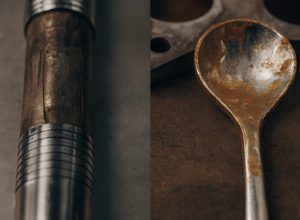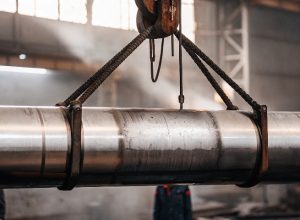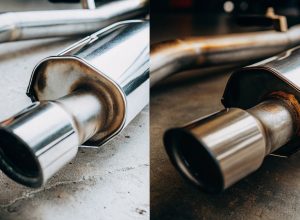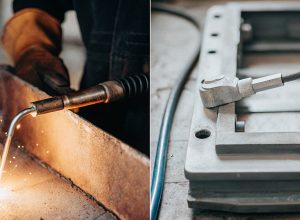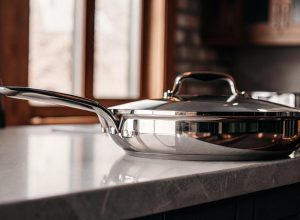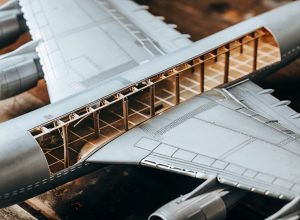Die außergewöhnliche Korrosionsbeständigkeit von Titanblech kann die Haltbarkeit von Chemieanlagen revolutionieren und kostspielige Ausfallzeiten reduzieren. In diesem Leitfaden werden die Korrosionsmechanismen von Titanblechen, die optimale Legierungsauswahl, Erkenntnisse über die Herstellung und Kostenfaktoren erläutert, um Ingenieure der chemischen Industrie bei der Materialauswahl zu unterstützen.
Mehr als 95% des in der chemischen Industrie verwendeten Titans basieren auf Klassenstufen 1, 2, 7 und 12 aufgrund ihrer hervorragenden Korrosionsbeständigkeit. Titan weist aufgrund seiner stabilen, selbstheilenden Oxidschicht eine hervorragende Beständigkeit in aggressiven Chlorid-, Säure- und Meerwasserumgebungen auf.
Titanium Sheet: Grundlagen der Korrosionsbeständigkeit in chemischen Umgebungen
Die schützende Oxidschicht des Titans untermauert seine unvergleichliche Leistung gegen Korrosion in einem Spektrum aggressiver chemischer Bedingungen.
Wie die Oxidschicht des Titans einen außergewöhnlichen Korrosionsschutz ermöglicht
Titan bildet spontan eine fest haftende und stabile TiO2-Passivschicht, die sich in Gegenwart von Sauerstoff oder Feuchtigkeit selbst repariert. Diese Oxidschicht ist anfangs typischerweise 12-16 Angström dick. Sie kann im Laufe der Jahre auf bis zu 250 Angström anwachsen oder durch Anodisierung oder thermische Oxidation verdickt werden. Die Schicht bietet einen robusten Schutz gegen allgemeine, Spalt-, Spannungs- und galvanische Korrosion. Nur Flusssäure und ihre Derivate können diese Schutzbarriere wirksam zerstören.
Vergleichende Legierungseigenschaften und Auswirkungen von Legierungen auf die Korrosionsbeständigkeit
Die Auswahl der richtigen Legierung ist entscheidend für die langfristige Leistungsfähigkeit von Chemieanlagen. Klassenstufen 1, 2, 7 und 12 sind die erste Wahl für ihre optimierten Korrosionsprofile.
Palladium- und Rutheniumzusätze verbessern die Beständigkeit gegen Spaltkorrosion und reduzierende saure Bedingungen durch eine geringere Wasserstoffüberspannung erheblich. Ein höherer Sauerstoff- oder Eisengehalt kann die Korrosionsbeständigkeit verringern, insbesondere unter aggressiven Bedingungen. Alpha- und Alpha-Beta-Legierungen können nicht wärmebehandelt werden, behalten aber ihre hohe Korrosionsbeständigkeit bei; Beta-Phasen-Legierungen können die Verformbarkeit verbessern und gleichzeitig die Beständigkeit beibehalten.
| Klasse | Zusammensetzung (wt%) | Korrosionsbeständigkeit Highlights | Typische Anwendungen |
|---|---|---|---|
| Klasse 1 | 99.5% Ti + O, Fe (niedrig) | Höchste Duktilität, ausgezeichnete Korrosionsbeständigkeit in milden Säuren und Seewasser | Schiffsarmaturen, chemische Verarbeitungsanlagen |
| Klasse 2 | >99% Ti, geringe Verunreinigungen | Am häufigsten verwendet; ausgewogene Korrosionsbeständigkeit und Schweißbarkeit | Rohrleitungen für ChemieanlagenWärmetauscher |
| Klasse 7 | Ti + 0,12-0,15% Pd | Erhöhte Beständigkeit gegen Spaltkorrosion und reduzierende Säuren | Bleichanlagen, Chlorid- und organische Säureumgebungen |
| Klasse 12 | Ti + 0,3% Mo + 0,8% Ni | Hervorragende Beständigkeit gegen Spalt- und Lochkorrosion, insbesondere bei Mischsäure und Chlorid | WärmetauscherEntsalzung, Raffineriekomponenten |
| Güteklasse 5 (Ti-6Al-4V) | Ti + 6% Al + 4% V | Gute Festigkeit, aber weniger korrosionsbeständig als CP-Sorten | Luft- und Raumfahrt, medizinische Implantate (weniger in hochkorrosiven Chemikalien) |
Titanbleche Anwendungen und Herstellung Hinweise für die chemische Verarbeitung
Das einzigartige Korrosionsprofil und die mechanischen Eigenschaften von Titanblech ermöglichen einen weit verbreiteten Einsatz in kritischen Komponenten von Chemieanlagen, wobei bewährte Herstellungsverfahren eine lange Lebensdauer gewährleisten.
Hauptanwendungen von Titanblech in der chemischen Industrie
Titanblech wird häufig in Wärmetauschern, Reaktoren, Lagertanks und Rohrleitungssystemen eingesetzt, die Meerwasser und chloridreichen Prozessströmen ausgesetzt sind. Aufgrund seiner stabilen Passivierung ist es das bevorzugte Material für den Umgang mit oxidierenden Säuren wie Salpetersäure, Chromsäure und Perchlorsäure. Seine Beständigkeit erstreckt sich auch auf die Verarbeitung von Industriechlor, Hypochlorit, Bleichmittel und organischen Säuren. Nach Angaben der Industrie haben einige Hersteller wie TIMET bieten Garantien von bis zu 40 Jahren gegen Korrosionsschäden bei ordnungsgemäß angebrachten Komponenten.
Einblicke in die Fabrikation: Schweißen, Umformen und Oberflächenbehandlungen
Titanblech lässt sich gut mit Wolfram-Inertgas (WIG) in sauberen, trockenen Umgebungen mit Schutzgas schweißen. In der Regel sind keine Wärmebehandlungen vor oder nach dem Schweißen erforderlich, aber eine gründliche Reinigung zur Entfernung von Verunreinigungen ist wichtig. Durch thermische Oxidation oder Eloxieren können die Oxidschichten verdickt werden, um die Korrosionsbeständigkeit vor der Exposition zu erhöhen. Oberflächenverunreinigungen mit Eisen können örtliche Korrosion auslösen; das Beizen in Salpeter-/Flusssäurelösungen beseitigt dieses Risiko.
Umfassende Korrosionsbetrachtungen und Kostenvorteile von Titanblech
Das Wissen um die Korrosionsmechanismen von Titan und die damit verbundenen Kosten ermöglicht es Chemieingenieuren, die Lebenszykluskosten und die Zuverlässigkeit bei der Anlagenplanung zu optimieren.
Sie suchen haltbare Titanbleche und -platten?
Entdecken Sie unser Angebot an hochwertigen Titanblechen und -platten für Anwendungen in der Luft- und Raumfahrt, der Chemie und der Schifffahrt. Unsere Produkte erfüllen strenge Normen und gewährleisten Zuverlässigkeit in anspruchsvollen Umgebungen.
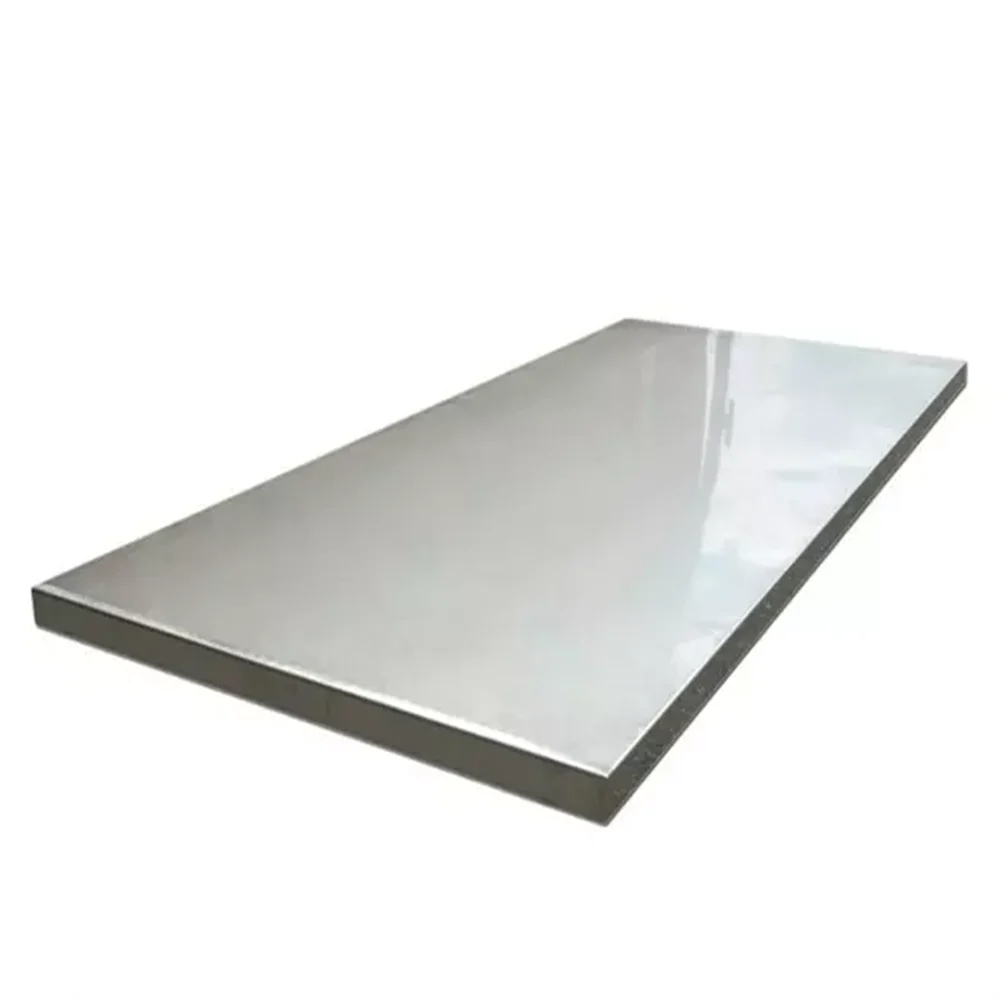
Detailliertes Korrosionsverhalten von Titanblech in chemischen Prozessen
Titan widersteht allgemeiner Korrosion mit Raten von typischerweise <0,04 mm/Jahr in oxidierenden Umgebungen einschließlich Meerwasser. Spaltkorrosion kann in aggressiven chloridgesättigten Solen bei erhöhten Temperaturen auftreten, die von Pd-haltigen Sorten kontrolliert werden. Spannungsrisskorrosion tritt bei den Sorten 1, 2, 7 und 12 unter typischen Bedingungen in Chemieanlagen so gut wie nicht auf. Titan ist immun gegen mikrobiologisch beeinflusste Korrosion (MIC), obwohl Biofouling ein Management erfordert.

Auswirkungen der Verwendung von Titanblech in Chemieanlagen auf die Lebenszykluskosten
Die anfänglichen Materialkosten sind zwar höher als bei rostfreiem Stahl, aber die längere Lebensdauer und die geringere Wartung senken die Gesamtbetriebskosten. Die Fähigkeit, in Meerwasser und säurehaltigen Umgebungen zuverlässig zu arbeiten, verhindert kostspielige Lecks und Ausfallzeiten. Garantiezeiten von bis zu 40 Jahren beweisen die außergewöhnliche Zuverlässigkeit von Titan. Das geringere Gewicht (bis zu 50% weniger als Stahl) trägt zu strukturellen Einsparungen und einer einfacheren Installation bei.
| Klasse | Wichtige Legierungselemente | Korrosionsbeständigkeit | Hinweise zur Herstellung | Typische Anwendungsbeispiele |
|---|---|---|---|---|
| Klasse 1 | Überwiegend reines Ti (O ≤ 0,18%) | Ausgezeichnete allgemeine Korrosionsbeständigkeit; geringe Festigkeit | Hohe Duktilität und Umformbarkeit; ausgezeichnete Schweißbarkeit | Seewasserleitungen, chemische Behälter, Wärmetauschermäntel |
| Klasse 2 | Reines Ti (etwas höhere Festigkeit als Grad 1) | Gleicher Korrosionsbereich wie Güteklasse 1; weithin akzeptiert | Gute Umform- und Schweißeigenschaften | Wärmetauscher, Rohrleitungssysteme, Lagertanks |
| Grad 7 (Ti + 0,12-0,15% Pd) | Pd-Zusatz für verbesserte Beständigkeit gegen reduzierende Säuren | Hervorragende Spaltkorrosionsbeständigkeit; Säureeinsatz | Ähnliche Schweißbarkeit wie CP; teurer | Bleichanlagen, Chlorservice, Ausrüstung für Säureprozesse |
| Klasse 12 (Ti + 0,3% Mo + 0,8% Ni) | Mo + Ni für verbesserte Lochfraß- und Spaltfestigkeit | Beste Beständigkeit gegen Spaltkorrosion in Chloriden und sauren Salzsolen | Etwas geringere Duktilität; mit Vorsicht schweißbar | Entsalzung, Prozesswärmetauscher in Raffinerien, chemische Anlagen |
| Güteklasse 5 (Ti-6Al-4V) | Al + V für Festigkeit und Temperaturstabilität | Gute Korrosionsbeständigkeit, aber weniger als CP-Sorten | Schwieriger zu formen; erfordert spezielles Schweißen | Komponenten für die Luft- und Raumfahrt, strukturelle Hardware (weniger in chemischen Anlagen) |
Häufig gestellte Fragen
Welche Titansorten sind für korrosive chemische Umgebungen am besten geeignet?
Konzentrieren Sie sich auf die Sorten 1 und 2 für allgemeine chemische Anwendungen, Sorte 7 für verbesserte Beständigkeit in reduzierenden Säuren und chlorhaltigen Umgebungen und Sorte 12 für verbesserte Spalt- und Lochfraßbeständigkeit in Chlorid/Sole und sauren Salzen. Vermeiden Sie den Einsatz von weniger korrosionsbeständigen Legierungen wie Güteklasse 5 in stark korrosiven Medien.
Wie widersteht Titan der Korrosion in Meerwasser und sauren Chloridumgebungen?
Titan bildet eine stabile und selbstheilende Oxidschicht (TiO2), die eine wirksame Barriere für die meisten aggressiven Chemikalien darstellt und unter normalen Bedingungen lokale Korrosion verhindert. Legierungszusätze wie Pd und Mo verbessern dieses Verhalten und erhöhen die Beständigkeit gegen Spaltkorrosion in raueren Umgebungen.
Gibt es bei der Verarbeitung von Titanblechen für Chemieanlagen etwas zu beachten?
Ja, Schweißen unter Schutzgas (WIG) mit sauberen und trockenen Oberflächen, um Versprödung zu vermeiden; sauberes Beizen ist wichtig, um Eisenverunreinigungen zu entfernen. Die Kaltumformung erfordert Schmierung und die Beachtung der Biegeradien aufgrund der Neigung von Titan zur Abnutzung und des geringeren Moduls. Thermisches Oxidieren oder Eloxieren kann den Oberflächenschutz verbessern.
Was sind die typischen Ausfallarten von Titanblechen in chemischen Prozessanlagen?
Zu den primären Versagensmechanismen gehören die Spaltkorrosion bei hohem Chloridgehalt und niedrigem pH-Wert in stagnierenden Zonen, die Wasserstoffversprödung bei kathodischer Polarisation oder fehlerhaften Oberflächen und selten die örtlich begrenzte Lochfraßkorrosion, wenn sie übermäßigen anodischen Potentialen ausgesetzt sind, die die Schutzgrenzen überschreiten.
Welche wirtschaftlichen Gründe sprechen für die Verwendung von Titanblechen in der Ausrüstung von Chemieanlagen?
Obwohl die Anfangskosten von Titanlegierungen höher sind, verringern ihre überlegene Korrosionsbeständigkeit und ihr geringes Gewicht den Wartungsaufwand, die Ausfallzeiten und die strukturellen Anforderungen, was zu niedrigeren Gesamtlebenszyklus- und Betriebskosten führt, die in kritischen Anwendungen oft bis zu 40 Jahre lang garantiert sind.



